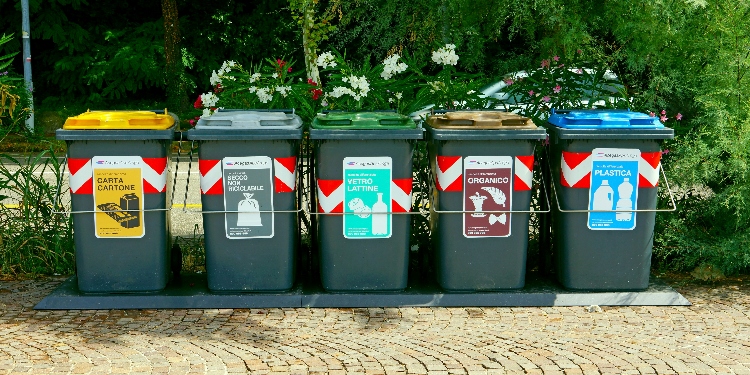Waste disposal isn’t just about tossing things in the right bin anymore. With constantly evolving regulations and fines that can reach into the millions, businesses need more than good intentions—they need a solid compliance strategy.
To comply with waste standards, organizations must identify applicable regulations, implement proper waste segregation and storage procedures, maintain detailed documentation, train staff on compliance protocols, and work with licensed waste management partners for disposal.
The catch? Requirements vary dramatically based on your industry, location, and waste types. Understanding these nuances is the difference between smooth operations and costly violations.
What Are The Different Types Of Waste Standards You Need To Follow?
Waste regulations operate on three levels: local municipal rules, national requirements, and international agreements. Local standards typically cover general waste handling and recycling schedules. National regulations—like EPA standards in the U.S.—address broader environmental protection and hazardous materials.
International standards, including the Basel Convention, govern cross-border waste movement. These levels often overlap, meaning you might need to satisfy multiple jurisdictions simultaneously.
Here’s where it gets tricky: local regulations can be stricter than national ones, especially in environmentally progressive cities. If you operate in multiple locations or engage in international trade, you’ll need to track which standards apply and meet the most stringent requirements.
How Do Industry-Specific Waste Requirements Differ?
Your industry dramatically affects your waste compliance obligations. Healthcare facilities follow strict protocols for biohazardous materials and sharps disposal. Manufacturing plants deal with chemical waste requiring specialized handling.
Tech companies must address e-waste disposal, while construction firms handle demolition debris and hazardous materials like asbestos. Each sector has its own rulebook.
Beyond baseline requirements, many industries have sector-specific certifications that exceed minimum legal compliance. Pharmaceutical companies face extra scrutiny for controlled substance disposal. Facilities generating liquid waste may utilize specialized services like S3S fluid recovery to ensure proper handling and compliance with fluid waste regulations.
These specialized standards often require dedicated equipment, trained personnel, and partnerships with expert waste management providers. Staying connected with industry associations helps you anticipate changes before they become problems.
What Are The Consequences Of Non-Compliance?
The penalties for non-compliance hit hard and from multiple directions. Financial fines range from thousands to millions, depending on violation severity. Operations can be shut down until you achieve compliance, creating massive revenue losses.
Serious violations—especially involving hazardous waste—can bring criminal charges. Long-term reputational damage can cost you customers and business partnerships.
But immediate penalties are just the beginning. Insurance premiums can skyrocket, or insurers may refuse coverage entirely. Future permits become harder to secure when agencies have documented violations on file.
Employee morale suffers when workers see their organization disregarding environmental responsibility. In today’s socially conscious market, environmental violations can trigger boycotts, negative media coverage, and difficulty attracting top talent who want to work for responsible employers.
What Documentation Is Needed to Maintain Waste Compliance?
Documentation proves compliance when regulators come knocking. You’ll need waste manifests tracking generation, transportation, and disposal—especially for hazardous materials.
Keep audit reports, training records, and incident reports for at least three years (some jurisdictions require longer). Environmental permits, licenses, and disposal certificates must stay current and accessible.
Digital documentation systems offer major advantages over paper trails. They automate compliance reporting, send alerts for expiring permits, and provide instant record access during inspections.
Chain-of-custody documentation is critical for hazardous materials, creating a complete trail from generation to final disposal. Regular internal reviews identify gaps before they become compliance issues. Maintaining clear records of corrective actions demonstrates continuous improvement—something regulators appreciate.
How Can You Create An Effective Waste Management Training Program?
Your compliance program is only as strong as your team’s understanding. Start by identifying who needs specialized training based on their roles and responsibilities.
Develop materials covering waste identification, proper handling procedures, emergency protocols, and documentation requirements. Schedule refresher courses annually or when regulations change.
Hands-on training and real-world scenarios improve retention and practical application. Testing or demonstrations ensure employees actually understand the material.
Create tiered training for different involvement levels. New employees need baseline instruction during onboarding, while supervisors and waste coordinators require advanced, specialized training.
Interactive workshops, video demonstrations, and facility walkthroughs boost engagement and knowledge retention. Most importantly, foster a culture where employees feel comfortable asking questions and reporting potential issues without fear of punishment—this is essential for long-term success.
Taking The First Step Toward Compliance
Start with a thorough waste audit of your current practices and materials. This baseline assessment reveals gaps in your compliance efforts and determines which specific regulations apply to your operations.
Once you understand where you stand, develop a structured plan to address shortcomings and ensure full compliance with all applicable standards. The investment in proper compliance today prevents the costly consequences of violations tomorrow.














































































